Birding Jazan Province (Part Two): Sabya and the Farasan Islands
- saudibirding
- May 26, 2021
- 12 min read
Updated: Sep 4, 2021
Highlights:
Harlequin Quail
Pied Cuckoo
Nubian Nightjar
African Palm-Swift
Small Buttonquail
Crab-plover
Jaeger species
White-eyed Gull
Brown Noddy
Bridled Tern
White-cheeked Tern
Great Crested Tern
Lesser Crested Tern
Brown Booby
Pink-backed Pelican
Goliath Heron
Striated Heron
Egyptian Vulture
White-throated Bee-eater
Sooty Falcon
Singing Bushlark
Zitting Cisticola
Arabian Babbler
Nile Valley Sunbird
May 15, 2021—Sabya and the Ferry to the Farasan Islands
So the plan was to catch the ferry to the Farasan Islands in the early afternoon, which would allow me to slip out early by myself to the fields in Sabya where Adam Harris and I saw Harlequin Quail and Small Buttonquail in July 2020. I was keen to get images this time around as well as some better recordings of their calls.

I arrived to the pivot fields shortly before sunup and drove slowly down a dirt track with a grassy field to my left, listening for either of my targets. The Singing Bushlarks were well into it at that point and I could hear a few singing from the window. Before long though I made out the rhythmic, cow-like lowing of a female Small Buttonquail somewhere out in the field. I knew it would be a challenge to hear her with the low hum of traffic on the road nearby for interference, but I stuck the shotgun mic out the window and hoped for the best. Sure enough, while faint, if you listen closely to the Xeno-Canto file below you'll hear the first audio recording of Small Buttonquail in XC from the Arabian Peninsula.
I continued up the road to where Adam and I stopped last July. Through the energetic din of Singing Bushlarks in aerial display, I soon heard Harlequin Quail and Zitting Cisticola. In July I only had my Sony pocket recorder with me, and the subsequent recordings captured all of the sound and fury of the grassland birds at Sabya greeting the new day. However, this time I had the shotgun mic, which allowed me to filter out a bit more of the surrounding sounds. I was pleased with the results. That said, though, Singing Bushlarks were everywhere and still dominated nearly every recording.
I then explored a scrubby patch on the northeast side of the fields. I thought it might be a good place Spotted Thick-knee. No luck there, but I did flush a Nubian Nightjar and was enchanted by the singing of several male Black-crowned Sparrow-Larks.
I continued birding from the car, thinking my chances of getting pictures of the quail might be better with the Chevy Tahoe as both blind and viewing stand. In a patch of taller shrubs on the perimeter of one of the fields, I found Pied Cuckoo, Black Scrub-Robin, and Arabian Babbler. As it was getting later into the morning and the birds were quieting down, I decided to venture out into the fields on foot. Shortly after getting out of the car, I heard another Small Buttonquail, but this time closer than the one before. I waited with my recorder at the ready but she didn't call again, so I stalked slowly into the field. Soon after she flushed once and then dropped a short distance away. I came upon an open strip where one of the tires of the irrigation arm passed, leaving a concentric line of bare ground through the otherwise ankle-high grass. Sure enough, I spotted some movement up ahead and there she was scurrying away from me straight down the track. I managed to capture a few images—not the sort I was hoping for, but these are incredibly shy birds so I was lucky to even get these.
I continued following the tire tracks through the field, flushing a couple of Harlequin Quail at one point, which took off for the opposite field. A short time later, a lone male put up and then dropped back down but twenty meters away. I slowly crept my way over and then spotted him stationary at the center of another tire track. Not only did he stay put long enough for a few pictures, but he started calling again while I was watching him. This is the Arabian subspecies (ssp. arabica) of an otherwise widespread African quail, and the audio recordings from this site represent the first for Arabia in Xeno-Canto.
In the afternoon we took the ferry to the Farasan Islands. This is a free crossing courtesy of King Salman, who is said to have gifted a fleet to the people of the islands. While we, unfortunately, couldn't go outside onto the deck, just viewing from the windows resulted in fairly stellar pelagic. On the crossing to the islands, I counted a total of 22 Brown Boobies, 40 Lesser Crested Terns, 11 Bridled Terns, 10 White-cheeked Terns, and three Brown Noddies, my first for the Kingdom. There were a few Sooty and White-eyed Gulls as well. The ferry ride back was even more productive.
May 16, 2021—Boat Tour East of Farasan Island
The next morning we met up with Abu Ibrahim, our boat operator, at the marina close to the ferry terminal. From there we headed northeast along eastern edge of Farasan Island proper towards the mangroves. I was hoping we might visit and see some species found in the mangroves along the coast of the mainland, such as Collared Kingfisher and Mangrove Reed Warbler. When we arrived, Abu Ibrahim informed us that the tide was retreating and that we were limited in how far we could enter. We managed to penetrate a shorter channel to the end, sitting for a time in silence to enjoy the stillness surrounding us. I was honestly expecting more activity, but besides an Osprey, two Western Reef Heron, and a lone Common Redshank, the only birds present were nesting African Collared-Doves, which were calling throughout the mangroves. We apparently missed the nesting season for Pink-backed Pelican, which build their nests on top of the mangroves.
We continued on to the larger mangrove forest, pausing close to shore to better appreciate a Goliath Heron, the world's largest heron. This species feeds on crabs, and against a bill like that, neither shell nor claw can prevent the inevitable. The southwest coast is the best place to find them; however, they have been sighted multiple times and in numbers during some recent surveys around islands in the northern Red Sea.
We arrived to the larger of the two mangroves just north of the port, but Abu Ibrahim could only take us in about half way with the tide dropping. Aside from a few more shorebirds, we didn't see much—no kingfishers unfortunately. Collared Kingfisher can be seen at some of the mangroves along the Asir and Jazan coasts, such as the ones near the coastal towns of Al Birk and Al Shuqaiq. There are no eBird sightings from the Farasan Islands, so it's possible that they don't occur there. Having said that, there aren't many sightings from Saudi period, so perhaps it's a matter of getting back out there to look for them.
We then headed out to open water on our way to check out a few islands that Abu Ibrahim said would be good for birds. On the way we saw Brown Booby, White-eyed and Sooty Gull, and four species of tern—Bridled, White-cheeked, Great Crested, and Lesser Crested. It seemed we went out a little further than necessary for reaching those islands, but I suspect that Abu Ibrahim knew we'd likely run into a pod of dolphins, and sure enough we did—a small pod of Spinner Dolphin entertained us as they raced in front of the bow. I checked our track in eBird later and discovered that we basically performed a figure-eight out in the open water with the dolphins frolicking ahead of us the entire time—they were totally playing!
Out at a couple of small, rocky islets northeast of the port, our count of Brown Boobies shot up as did our count of White-eyed Gulls and nesting tern species. I was on the lookout for one species in particular though—Sooty Falcon—which Abu Ibrahim had sent me a video of a couple of weeks before. His bird was flying around the island, but it wasn't clear which of the two we were visiting. We'd made a quick pass of the larger island, only covering about a third of its perimeter before Abu Ibrahim steered toward the smaller one. Glancing back it seemed like the bigger one might have higher cliffs, so I asked him to round back to that one and keep us close to the rocks. Before long, Michelle asked 'what's that?' That was an adult Sooty Falcon perched about midway up one of the taller cliffs. Score! This bird grew anxious as we drifted closer and flew into a deeper recess in the rocks. I glimpsed a second bird following the lead of the other, which we later spotted just barely visible beneath an overhang in the rocks—perhaps the location of their nest. These birds will raise their chicks through the hot Saudi summer with the young birds fledging just in time to hone their hunting skills on the numerous passerines traveling south along the coast during the start of the fall migration.
Abu Ibrahim might have taken us to another spot for birds but I was well pleased with the results of the morning and thought it a perfect time for some snorkeling. A short time later, he stopped at an area near the mangroves that was actually rather disappointing, as recent north winds, as Abu Ibrahim later explained, had reduced the visibility in the area. It wasn't just that though—this reef was not nearly as healthy as the ones we saw in the Gulf of Aqaba or even just offshore in Jeddah. We love getting in the water regardless, but Abu Ibrahim's tour only ultimately failed in one department for me—the diving. Surely, even the lee side of the nearby island would've had better visibility. Good thing the diving the next day turned out the best we've ever had...
After our outing we freshened up at the hotel and then went out exploring by car, hitting some of the villages to the north of the main town. The wilder center of the big island looked quite interesting with large clumps of euphorbias among some other scrubby vegetation along shallow wadis running to the sea. There was a sign at one point saying to watch out for gazelles, and the stretch certainly looked good for wildlife. One of my readers mentioned something about the possibility of seeing Arabian Bustard on the Farasan Islands. I'd put my money on this area as the place to look. During our road tour of the far corners of the big island, we saw several Egyptian Vultures and Brown-necked Ravens but not much else. Those vultures were incredible though. We would see them fairly regularly around Jebel Hafeet in Al Ain (UAE), but these were the first I'd seen in Saudi after three and a half years in the Kingdom. In fact, throughout much of the country, vultures are far less common than you would think, given all the livestock and wilderness. Another vulture we saw fairly regularly in the UAE but which has proven tricky to find here is the Lappet-faced Vulture. We even drove around the perimeter of a desert preserve in Makkah Province where they breed with no joy. Ultimately, though, the foothills and mountains of the west are the best places to find vultures, but it's clear their numbers have decreased, especially breeding species, like the Eurasian Griffon Vulture. From what I've read the three biggest culprits contributing to this trend have been secondary poisoning, electrocution, and hunting. The conservation culture in the US or the EU would've sounded the alarm long ago. For some of us, the anxiety lingers that we may witness the extinction of certain species during our tenure in the Kingdom—as Dr. Christopher Boland expressed recently in reference to the dire state of the Asir Magpie's population. That's how critical the situation has become in some cases.
One interesting side note: we explored the northwestern side of Farasan Island, the most elevated corner of the island and were intrigued to discover a slope perhaps ten to fifteen meters above sea level that was littered with fossilized invertebrates, the most interesting of which were fully intact giant clam shells, still nestled in a crook in the rock as they would have been back when the seas were that much higher a couple of hundred million years ago, and the near-honeycomb remains of what I think were tube worm colonies. We were in a fairly well trafficked area, but further west along this more rugged terrain, where the 4x4s might not dare to go, might offer more pristine gleaning grounds for fossils.
May 17, 2021—Boat Tour West of Farasan Island
The next morning we met Faris Al Absi, our boat operator for a tour of the west side of Farasan Island. Since the outing the day before hit mostly rocky islets, the objective of this, our last morning in Jazan Province, was to find some larger seabird breeding colonies on what I was expecting to be sandier islands. In particular, I was hoping to find nesting Brown Noddy—I had seen an eBird report of 70 from somewhere on the western side of the archipelago. The first stop of the morning was initially meant to be of more historic-cultural interest but unexpectedly became became more about birds.
On the western side of the Farasan Archipelago, off Saudi’s southwest coast, lies the island of Qummah (جزيرة قماح). Most tourists visit the island to check out the old German fort, which was erected close to the shore during WWII. That structure doesn't look much different than the forts built by Arabs throughout the region and could easily be glossed over by those who've spent a long time in the Middle East and seen tons of forts. What struck me during our visit was a preponderance of another type of structure. The villagers here have perhaps the largest migratory bird trapping operation in the Kingdom with small (perhaps a meter and a half high) bush-shaped clusters of branches wrapped in netting dotting the the entire north side of the island. During our visit, we learned about their practice of trapping passerines. According to the young men we met, consumption of the small migratory birds they trap is popular with “all Saudis”. Not sure how true that is, but the scale of their trapping efforts certainly indicates the local demand must be lucrative enough. While we were there, a couple of the young men returned, birds in hand—the first arriving on four-wheeler with a fairly bedraggled Eastern Olivaceous Warbler and the next with a bright and desperately frightened Willow Warbler. I was happy they allowed me to release them, but these lucky birds were but two of possibly thousands trapped during the peak of the season. As if crossing vast stretches of sea and desert on their annual passage between Africa and Eurasia isn’t hard enough, migratory birds are subjected to a range of anthropogenic hazards that take an immeasurable toll on their numbers. Hopefully the Saudi government’s planned conservation efforts will include regulating such practices and reducing the number of migratory birds perishing in the Kingdom.
We continued south along the eastern flank of the Qummah Island and it was clear that the seabirds didn't favor it and likely on account of the presence of (bird-eating) humans. A rocky extension jutting south of the island might have been a great spot for nesting seabirds if it weren't for the dirt track I spied running its length. This is likely why the rocky islets appeared to have more nesting birds—harder to land. The reefs off the southeast side of Qummah, however, turned out to be exceptionally good. The water was wonderfully clear, there was a nice array of healthy (looking) corals, and, of course, the abundance and diversity of sea life was off the charts. The highlights of our morning swim were Blue-lipped Giant Clams, Pharaoh Cuttlefish, Common Lionfish, Ribbontail Stingrays, one massive Round Ribbontail Ray (possibly) with two stinging spines, and, best of all, a two-meter long Tawny Nurse Shark resting in a tunnel beneath one of the reef rocks. Unable to resist, I dove down the four to five meters and stroked the shark's fin and lower flank—rough as you'd expect but this still surprised me a little. As a kid, I was obsessed with sharks, but here I was almost 40 years later having my first experience touching a proper one—dead dogfish on the Atlantic coast don't count. Later Liz and her friend, Anwar, jumped back in at another beautiful spot and saw a sea turtle. Honestly, of all the places we've snorkeled, this by far was the best and reason enough for a return visit to the Farasans.
We continued south from Qummah to Damsuk Island (جزيرة دمسك). We didn't see many birds in the area where boats could land, particularly in the cove that cleaves the north side of the island. I asked Faris, the boat operator, to swing down the eastern side of the island. Here we found a few rocky spits of reef that had attracted a good mix of sea- and shorebirds. About two dozen Crab-plovers, a few Whimbrels, and a couple Striated Herons were feeding along the shore. Bridled, Greater Crested, Lesser Crested, and White-cheeked terns were numerous along the water's edge and running out to the end of each spit. Ahead of us I spotted a small mound with mostly Bridled Terns on it, but then there, right at the top, I noticed a larger, dark brown form. Once Faris moved us closer I was able to make out the features of one of the day's targets—Brown Noddy.
It was getting on time to head back to the marina but not without a couple diversions along the way. At one point I saw a pair of Sooty Falcons either cooperatively hunting (badly) or competing for a late passing Bank Swallow. The lucky migrant evaded their talons and we watched as the falcons gave up the chase and flew back towards the island. At another point, Michelle drew my attention to a second Brown Noddy passing in front of the boat.
By early afternoon we were wrapping up a stellar visit to Jazan Province with another stellar pelagic on the ferry crossing back to Jizan port. I counted a whopping 32 Brown Boobies this time along with 29 Lesser Crested Tern, 15 Bridled Tern, 5 Brown Noddies, and a Jaeger species, which flew in close behind the ferry to case the dozen or so Lesser Crested Terns feeding in the churn of the ferry's wake. This time I was also kept busy by a small gathering of children interested in checking out my bins. I hope at least one of them will come away from the experience a new birding convert.

With only a month and a half until my interim leave, Saudi's COVID restrictions appear poised to keep us in the Kingdom for yet another summer. If that turns out to be the case, then expect more dispatches from Saudi's wild west coast come July.
Good birding, y'all!

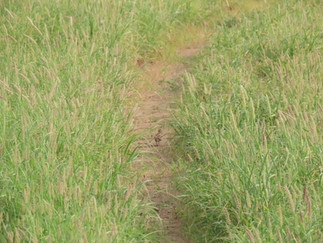

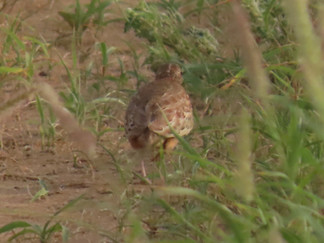







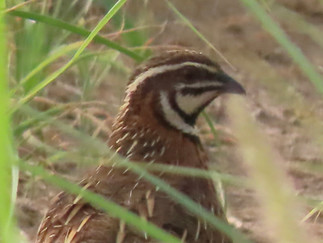


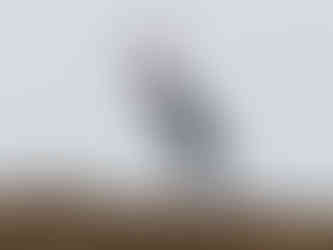

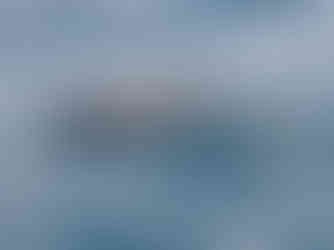

































Comments